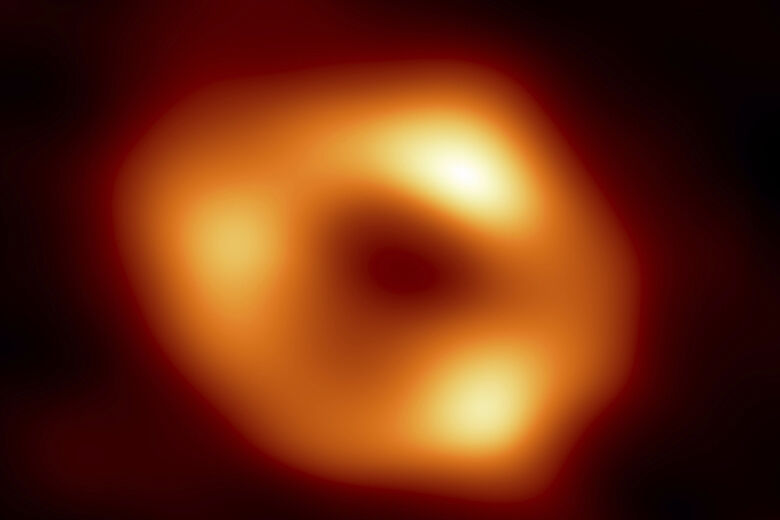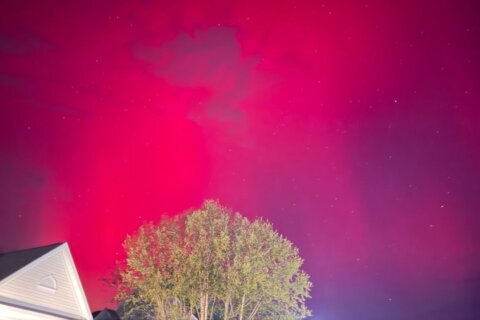
It’s just over three years to the day that I wrote about the first ever image of a black hole being obtained in a galaxy known as M87. Today, the long anticipated image of the black hole residing in the center of our very own Milky Way Galaxy was released.
The worldwide collaboration of telescopes called the Event Horizon Telescope (EHT) took data starting in 2017 of our Milky Way Galaxy’s own supermassive black hole, Sagittarius A* (Sgr A*) — pronounced “sadge-ay-star.” It is a black hole beast at the center of our galaxy that is 4.4 million times the mass of our Sun. For decades, astronomers have studied the galactic center of the Milky Way, including Sgr A*, and getting an image of our galaxy’s black hole was a high priority for EHT.
Sgr A* is located in the center of our Milky Way Galaxy in the constellation of Sagittarius. We can view the Milky Way Galaxy and the location of the galactic center from dark sky sites, especially during the summer months for the Northern and Southern Hemispheres.
It took longer to acquire and process the EHT data for Sgr A* because it is a far smaller and more complex black hole than the 6.5 billion solar mass black hole beast residing in the heart of the huge galaxy called M87.
The Center for Astrophysics | Harvard & Smithsonian provided the following two videos and their descriptions in their email news release.
Meet Sgr A*: Zooming into the black hole at the center of our galaxy
(CREDIT: ESO/L. Calçada, N. Risinger (skysurvey.org), DSS, VISTA, VVV Survey/D. Minniti DSS, Nogueras-Lara et al., Schoedel, NACO, GRAVITY Collaboration, EHT Collaboration (Music: Azul Cobalto))
This video sequence zooms into the black hole (Sgr A*) at the center of our galaxy. Beginning with a broad view of the Milky Way, we dive into the dense clouds of gas and dust at our galactic center. The stars here have been observed with ESO’s Very Large Telescope and ESO’s Very Large Telescope Interferometer for decades, the black hole’s immense gravitational pull distorting the orbits of the stars closest to it. Finally, we arrive at Sgr A*, the first image of which has been captured by the EHT collaboration. The black hole is shown by a dark central region called a shadow, surrounded by a ring of luminous gas and dust.
The various observations used here were taken at different times, by different teams and with different facilities, and put together for the purpose of the zoom effect. The images go from visible wavelengths at the beginning to infrared, with the very final image being taken at radio wavelengths.
M87* and Sgr A*: Comparing black holes
(CREDIT: SAO / Crazybridge Studios)
How do the black holes M87* and Sgr A* differ in size — and how did this affect imaging each black hole? Learn how the Event Horizon Telescope (EHT) collaboration captures images of these objects that are constantly on the move.
There will be future black hole images from EHT. But what really has me excited is what the James Webb Space Telescope (JWST) will see when it turns its 18 super cold Beryllium mirrors and instruments to view the very center of our galaxy. The sights I think we will see will add another historic milestone in the study of our home galaxy like today.
Tomorrow, I will have all you need to know about Sunday’s total lunar eclipse — you won’t want to miss this sky spectacle.
Follow my Twitter @SkyGuyinVA and daily blog to keep up with the latest news in astronomy and space exploration. You can also email me at skyguyinva@gmail.com.







